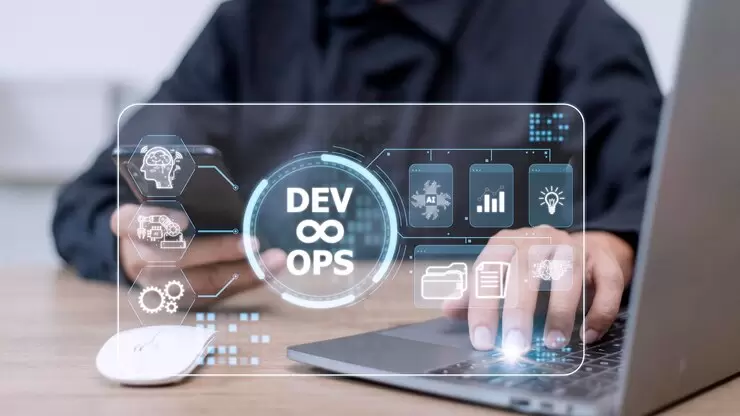DevOps and MDM Integration: How they Development and Deployment
In the ever-evolving landscape of technology, the convergence of DevOps and Mobile Device Management (MDM) heralds a new era of efficiency and agility in software development, particularly in the realm of mobile applications. DevOps revolutionizes the development and deployment processes by fostering collaboration and automation, while MDM empowers organizations to manage and secure their mobile devices effectively. Together, the integration of DevOps and MDM promises to streamline the software development lifecycle, ensuring seamless access to manage and deploy mobile devices while enhancing security and accelerating time-to-market for mobile applications. Let’s explore the intricacies of this integration and its transformative potential in the modern digital era.
Understanding DevOps and MDM Integration
- Defining DevOps and its Core Principles
DevOps is a collaborative approach to software development and IT operations, emphasizing communication, integration, automation, and collaboration. It seeks to streamline the software delivery process by bridging the gap between development (Dev) and operations (Ops) teams, enabling faster development cycles, continuous delivery, and improved quality assurance.
- The Essence of Mobile Device Management (MDM)
Mobile Device Management (MDM) is a methodology that enables organizations to manage, secure, and monitor mobile devices (such as smartphones, tablets, and laptops) across their network. It involves deploying policies, configurations, and applications to mobile devices, ensuring compliance, security, and productivity.
- Exploring the Need for Integration
The integration of DevOps and MDM is essential for organizations seeking to optimize their software development and deployment processes, especially in the context of mobile applications. By integrating these two disciplines, organizations can ensure that development and operations teams have seamless access to manage and deploy mobile devices throughout the software development lifecycle. This integration facilitates efficient collaboration, enhances security, and accelerates the delivery of mobile applications to end-users.
The Benefits of Integration
- Enhanced Collaboration and Communication
The integration of DevOps and MDM fosters improved collaboration and communication between development and operations teams, as well as with mobile device management administrators. By breaking down silos and promoting cross-functional teamwork, organizations can ensure that all stakeholders are aligned toward common goals. Developers gain insights into the operational requirements and constraints of mobile devices, while operations teams understand the development process and dependencies of mobile applications. This shared understanding leads to faster issue resolution, fewer deployment errors, and smoother software releases, ultimately enhancing the overall efficiency and effectiveness of the software development lifecycle.
- Improved Data Quality and Consistency
Integration of DevOps and MDM ensures that data used in the development and deployment processes of mobile applications remains consistent, accurate, and secure. MDM solutions provide centralized management of mobile device configurations, applications, and data, allowing organizations to enforce data governance policies and maintain data integrity across devices. DevOps practices, such as automated testing and deployment pipelines, further contribute to data quality by reducing manual errors and ensuring consistent deployment processes. As a result, organizations can rely on high-quality data throughout the software development lifecycle, leading to more reliable and secure mobile applications.
- Accelerated Development Cycles
The integration of DevOps and MDM accelerates development cycles for mobile applications by streamlining processes and reducing bottlenecks. DevOps practices such as continuous integration and continuous delivery (CI/CD) enable developers to automate the building, testing, and deployment of mobile apps, allowing for rapid iteration and feedback loops. MDM solutions complement this by providing centralized management of mobile devices and applications, simplifying the deployment process, and ensuring consistency across devices. By combining DevOps and MDM, organizations can shorten development cycles, deliver updates more frequently, and respond quickly to changing market demands, ultimately gaining a competitive edge in the mobile app landscape.
Key Challenges and Solutions
- Addressing Cultural Resistance
One of the key challenges in integrating DevOps and MDM is overcoming cultural resistance within organizations. Traditional silos between development, operations, and mobile device management teams can hinder collaboration and the adoption of new practices. To address this challenge, organizations must foster a culture of collaboration, transparency, and shared responsibility. Encouraging open communication, providing training and support for new processes, and incentivizing cross-functional teamwork can help break down cultural barriers and promote acceptance of DevOps and MDM integration.
- Ensuring Data Security and Compliance
Another challenge in integrating DevOps and MDM is ensuring data security and compliance with regulatory requirements. Mobile devices often contain sensitive data that must be protected from unauthorized access and breaches. MDM solutions provide mechanisms for enforcing security policies, such as device encryption, remote wipe, and app blacklisting, but integrating these with DevOps processes requires careful consideration. Organizations must implement robust security measures throughout the software development lifecycle, including secure coding practices, vulnerability scanning, and regular security audits, to mitigate risks and ensure compliance with relevant regulations.
- Implementing Effective Change Management Strategies
Integrating DevOps and MDM requires organizations to adopt new tools, processes, and methodologies, which can disrupt existing workflows and introduce resistance to change. Effective change management strategies are essential to minimize disruptions and ensure a smooth transition to integrated practices. This includes involving stakeholders early in the process, providing training and support for new tools and processes, and gradually phasing in changes to minimize disruption. Additionally, organizations should continuously monitor and evaluate the impact of integration efforts, soliciting feedback from stakeholders and adjusting strategies as needed to ensure successful implementation.
Best Practices for Integration
- Establishing Clear Objectives and Goals
Before embarking on the integration of DevOps and MDM, organizations must establish clear objectives and goals. This involves identifying key pain points and areas for improvement, as well as defining success criteria for the integration initiative. By setting clear objectives, organizations can ensure alignment across teams and stakeholders, guiding decision-making and prioritization throughout the integration process.
- Investing in Robust Automation and Tooling
Automation is a cornerstone of DevOps practices and plays a critical role in the integration of DevOps and MDM. Organizations should invest in robust automation tools and frameworks to streamline development, testing, deployment, and management processes for mobile applications. This includes tools for continuous integration, automated testing, network automation tools, configuration management, and deployment orchestration. By automating repetitive tasks and workflows, organizations can increase efficiency, reduce errors, and accelerate time-to-market for mobile apps.
- Prioritizing Continuous Monitoring and Optimization
Continuous monitoring and optimization are essential for ensuring the success of integrated DevOps and MDM practices. Organizations should implement monitoring tools and metrics to track the performance, availability, and security of mobile applications and devices in real time. This allows teams to identify issues quickly, respond proactively to incidents, and optimize processes for maximum efficiency and reliability. Additionally, organizations should regularly review and refine their integration strategies, incorporating feedback from stakeholders and adapting to changing business needs and technology trends.
Conclusion
In conclusion, the integration of DevOps and Mobile Device Management (MDM) represents a transformative approach to mobile application development and management. By breaking down silos between development, operations, and mobile device management teams, organizations can streamline processes, improve collaboration, and accelerate time-to-market for mobile applications. Through real-world case studies, we’ve seen how companies have successfully overcome challenges and achieved tangible benefits from integration, including increased efficiency, enhanced security, and maximized return on investment. As technology continues to evolve, embracing DevOps and MDM integration becomes not only a strategic imperative but also a competitive advantage for organizations looking to thrive in the mobile-first digital landscape. By leveraging best practices and lessons learned from these case studies, organizations can unlock the full potential of integrated DevOps and MDM practices, driving innovation and success in mobile app development.







